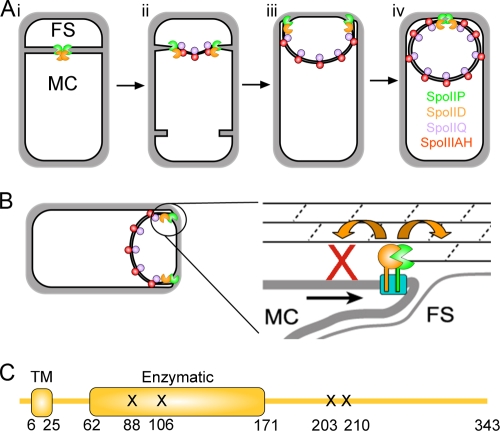FIG. 1.
Engulfment in B. subtilis. (A) (i) Engulfment begins with formation of an asymmetric septum that divides the cell into the forespore (FS) and mother cell (MC). SpoIID (orange pacman) and SpoIIP (green pacman) peptidoglycan degradation enzymes localize to the center of the septum. (ii) SpoIID and SpoIIP thin the septal peptidoglycan, starting from the center and moving toward the cell edges. SpoIIQ (purple ball) and SpoIIIAH (red ball) form a zipper across the septum, assembling foci behind the leading edges. (iii) The peptidoglycan degradation enzymes localize to the leading edges during membrane migration, while additional SpoIIQ-SpoIIIAH complexes assemble around the forespore. (iv) Engulfment membrane fission occurs at the top of the forespore, releasing the forespore into the mother cell cytoplasm. (B) Burnt-bridge Brownian ratchet model for membrane migration, adapted from earlier studies (1, 7). (C) Schematic representation of the SpoIID domain structure. The transmembrane domain (TM) and putative enzymatic domain, as defined by Pfam (14), are indicated. Amino acid numbers are below the schematic, and mutations causing in vivo phenotypes are indicated by an “X”.

